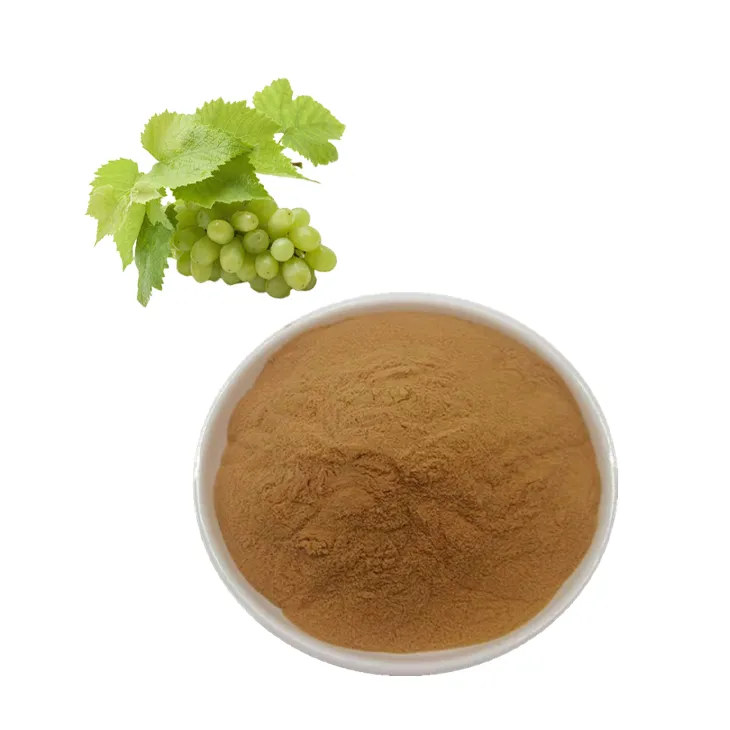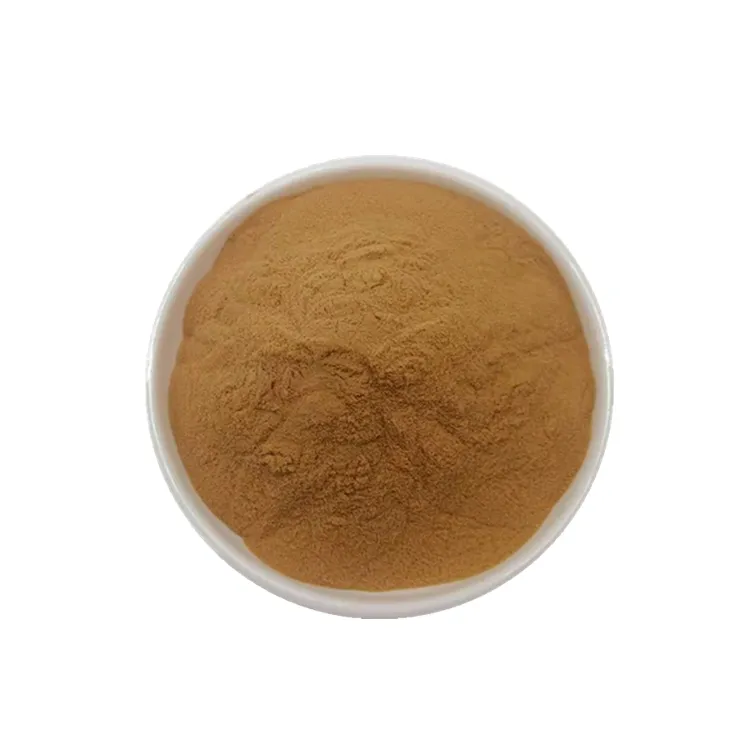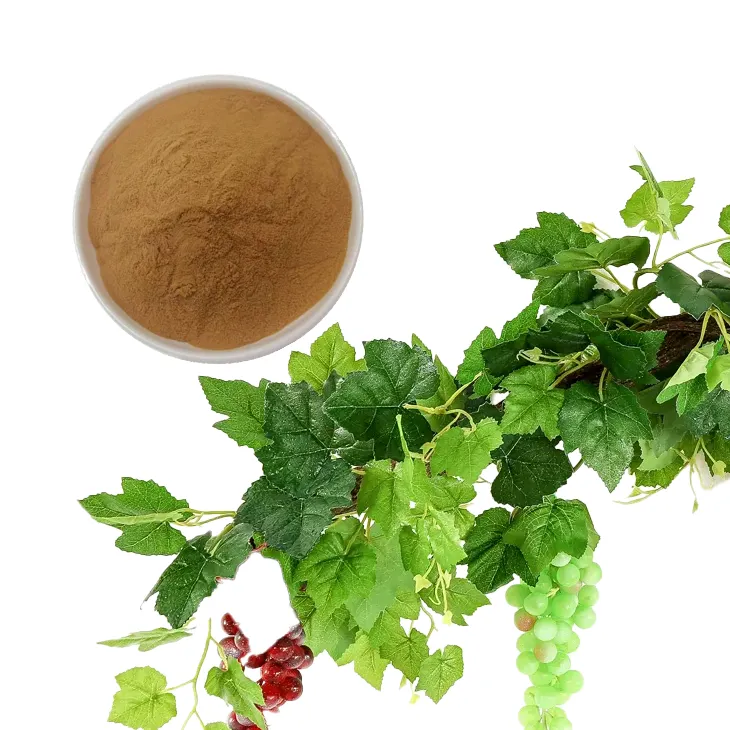- 0086-571-85302990
- sales@greenskybio.com
How to Extract Grape Leaf Extract by Steam Distillation.
2024-11-29

1. Introduction to Grape Leaf Extract and Steam Distillation
Grape leaves have been used for various purposes throughout history. They are not only a part of the grapevine but also hold potential in different industries. Steam distillation is a popular method for extracting valuable compounds from plant materials, and it is equally applicable to grape leaves.
Steam distillation works on the principle of using steam to vaporize the volatile compounds present in the grape leaves. These vaporized compounds are then condensed back to a liquid form, which is the Grape Leaf Extract. This method is preferred because it can extract a wide range of compounds while maintaining their integrity and purity.

2. Equipment Needed for Steam Distillation of Grape Leaves
The following are the essential pieces of equipment required for steam distilling grape leaves:
- Steam Generator: This is used to produce steam. It can be a simple kettle or a more specialized steam - producing device. The steam generator should be able to produce a consistent supply of steam at the appropriate temperature and pressure.
- Distillation Flask: The grape leaves are placed in this flask. It should be made of heat - resistant glass, such as borosilicate glass, to withstand the heat during distillation.
- Condenser: This is used to cool down the vaporized compounds and convert them back into a liquid state. There are different types of condensers, such as the Liebig condenser or the Graham condenser.
- Receiver Flask: This flask is used to collect the condensed Grape Leaf Extract. It should be clean and sterile to ensure the purity of the final product.
- Thermometer: To monitor the temperature during the distillation process. This helps in controlling the process and ensuring that the correct compounds are being extracted.
- Tubing: Flexible tubing is used to connect the different components of the distillation setup, such as connecting the steam generator to the distillation flask and the condenser to the receiver flask.

3. Preparation of Grape Leaves for Steam Distillation
Proper preparation of grape leaves is crucial for a successful steam distillation process:
- Collection: Grape leaves should be collected from healthy grapevines. It is best to collect them during a specific time of the year when the concentration of desired compounds is at its peak. For example, in some cases, young and tender grape leaves may contain higher levels of certain beneficial compounds.
- Cleaning: Once collected, the grape leaves need to be thoroughly cleaned. Remove any dirt, debris, or insects from the leaves. This can be done by gently washing the leaves in clean water. After washing, allow the leaves to dry completely. Drying can be done either in a well - ventilated area or using a low - heat drying method to avoid damaging the leaves.
- Chopping or Grinding: After drying, the grape leaves can be chopped into smaller pieces or ground into a fine powder. This increases the surface area of the leaves, which allows for more efficient extraction during the steam distillation process. However, be careful not to over - process the leaves as it may damage some of the compounds.

4. The Steam Distillation Process Step - by - Step
Here is a step - by - step guide to performing steam distillation of grape leaves:
- Setup of the Equipment:
Connect all the equipment as per the design of the distillation setup. Ensure that the tubing is properly attached and there are no leaks. Place the thermometer in the distillation flask to monitor the temperature accurately.
- Loading the Grape Leaves:
Put the prepared grape leaves (either chopped or powdered) into the distillation flask. Make sure not to overfill the flask as this may interfere with the steam circulation.
- Starting the Steam Generator:
Turn on the steam generator and adjust the settings to produce a slow and steady stream of steam. The steam should start to flow into the distillation flask.
- Monitoring the Temperature:
As the steam enters the distillation flask, the temperature will start to rise. Monitor the temperature closely using the thermometer. Different compounds will vaporize at different temperatures, so it is important to keep the temperature within the appropriate range for the desired extraction.
- Condensation:
The vaporized compounds from the grape leaves will travel through the tubing and into the condenser. The condenser will cool the vapors, causing them to condense back into a liquid. Ensure that the condenser is working efficiently by maintaining a proper flow of cooling water (if applicable).
- Collection of the Extract:
The condensed grape leaf extract will drip into the receiver flask. As the distillation process continues, more extract will be collected. Monitor the amount of extract being collected and the progress of the distillation.
- Ending the Distillation:
Once the desired amount of extract has been collected or when the distillation process has run its course (for example, when no more significant amounts of extract are being produced), turn off the steam generator. Allow the system to cool down before disassembling the equipment.
5. Analyzing the Grape Leaf Extract
After obtaining the grape leaf extract through steam distillation, it is important to analyze its composition. This can be done using various techniques:
- Gas Chromatography - Mass Spectrometry (GC - MS): This technique is used to identify and quantify the different volatile compounds present in the extract. It can provide detailed information about the chemical makeup of the extract, including the types of alcohols, esters, and terpenes present.
- High - Performance Liquid Chromatography (HPLC): HPLC is useful for analyzing non - volatile compounds in the grape leaf extract. It can separate and identify different components based on their chemical properties, such as polarity and molecular size.
- Infrared Spectroscopy (IR): IR spectroscopy can be used to identify functional groups present in the extract. It provides information about the types of bonds present in the compounds, which can give clues about the overall structure and nature of the extract.
6. Applications of Grape Leaf Extract in Various Industries
6.1. Food Industry
Grape leaf extract has several applications in the food industry:
- It can be used as a natural flavor enhancer. The unique flavor compounds present in the extract can add depth and complexity to food products, such as sauces, dressings, and marinades.
- As a preservative, the extract may possess antimicrobial properties that can help in extending the shelf life of certain food items. This is especially important in the era of increasing demand for natural preservatives.
6.2. Cosmetic Industry
In the cosmetic industry, grape leaf extract has significant potential:
- It is rich in antioxidants, which can be beneficial for skin health. These antioxidants can help in protecting the skin from free radical damage, reducing signs of aging such as wrinkles and fine lines.
- The extract may also have anti - inflammatory properties, which can be used in products for treating skin conditions like acne or eczema.
6.3. Pharmaceutical Industry
The pharmaceutical industry is also exploring the use of grape leaf extract:
- Some studies suggest that the extract may have potential medicinal properties, such as anti - diabetic or anti - cancer effects. However, more research is needed to fully understand and develop these potential applications.
- It can be used as a source of bioactive compounds for drug development. The diverse chemical composition of the extract provides a rich source of molecules that can be studied for their pharmacological activities.
7. Quality Control and Safety Considerations
When dealing with grape leaf extract obtained through steam distillation, quality control and safety are of utmost importance:
- Quality Control:
Regularly test the extract for its purity and composition. This includes checking for contaminants such as heavy metals, pesticides, or other impurities. Ensure that the extraction process is consistent and reproducible to maintain a high - quality product.
- Safety Considerations:
Ensure that the grape leaves used for extraction are from a safe source, free from harmful pesticides or other toxins. Also, during the distillation process, follow proper safety procedures to avoid accidents, such as burns from hot equipment or steam.
8. Conclusion
Steam distillation is a valuable method for extracting grape leaf extract. It allows for the isolation of a wide range of compounds that have potential applications in various industries. By following the proper steps for preparation, distillation, analysis, and quality control, it is possible to obtain a high - quality grape leaf extract that can be further explored for its many benefits.
FAQ:
Q1: What are the basic requirements for the equipment in steam distillation extraction of grape leaves?
For steam distillation extraction of grape leaves, the basic equipment requirements include a distillation flask which should be of appropriate size to hold the grape leaves. A condenser is crucial to cool the vapor back into liquid. A heat source, such as a heating mantle or a Bunsen burner, is needed to generate steam. Additionally, there should be proper tubing for the passage of steam and the condensed liquid. Collection vessels are also required to collect the final extract.
Q2: How should grape leaves be prepared before steam distillation?
Before steam distillation, grape leaves should be thoroughly washed to remove any dirt, debris, or pesticides. They are then usually dried to a certain extent. It is important to cut or shred the grape leaves into smaller pieces. This increases the surface area exposed to the steam, which helps in more efficient extraction.
Q3: What are the main factors affecting the quality of grape leaf extract obtained by steam distillation?
The main factors include the quality of the grape leaves themselves. Older or diseased leaves may yield a different quality of extract compared to healthy young leaves. The temperature during distillation is crucial. If the temperature is too high, it may cause degradation of some components in the extract. The duration of distillation also matters. Too short a duration may result in incomplete extraction, while too long may introduce unwanted by - products. Also, the pressure during the process, if not properly controlled, can affect the quality of the extract.
Q4: What are the potential applications of grape leaf extract obtained by steam distillation?
The grape leaf extract obtained by steam distillation has potential applications in the food industry. It can be used as a natural flavoring agent. In the cosmetics industry, it may have antioxidant properties that can be beneficial for skin health and thus used in skincare products. In the pharmaceutical industry, it may possess certain bioactive compounds that could be explored for medicinal purposes, such as anti - inflammatory or antimicrobial properties.
Q5: Are there any safety precautions to be taken during the steam distillation extraction of grape leaves?
Yes, there are several safety precautions. When using a heat source, proper fire safety measures should be in place, such as having a fire extinguisher nearby. The glassware used in the distillation setup should be heat - resistant and properly assembled to prevent breakage. Also, since steam is involved, there is a risk of burns, so appropriate protective gear like heat - resistant gloves should be worn. Moreover, if any chemicals are used for cleaning the equipment before or after the process, they should be handled carefully according to their safety instructions.
Related literature
- Steam Distillation: Principles and Applications in Botanical Extracts"
- "The Chemistry and Potential of Grape Leaf - Derived Extracts"
- "Optimization of Steam Distillation for Plant Extracts: A Case Study of Grape Leaves"
- ▶ Hesperidin
- ▶ citrus bioflavonoids
- ▶ plant extract
- ▶ lycopene
- ▶ Diosmin
- ▶ Grape seed extract
- ▶ Sea buckthorn Juice Powder
- ▶ Beetroot powder
- ▶ Hops Extract
- ▶ Artichoke Extract
- ▶ Reishi mushroom extract
- ▶ Astaxanthin
- ▶ Green Tea Extract
- ▶ Curcumin Extract
- ▶ Horse Chestnut Extract
- ▶ Other Problems
- ▶ Boswellia Serrata Extract
- ▶ Resveratrol Extract
- ▶ Marigold Extract
- ▶ Grape Leaf Extract
- ▶ blog3
- ▶ Aminolevulinic acid
- ▶ Cranberry Extract
- ▶ Red Yeast Rice
- ▶ Red Wine Extract
-
Dandelion Leaf Extract
2024-11-29
-
Reishi mushroom extract
2024-11-29
-
Diosmin
2024-11-29
-
Tongkat Ali Extract
2024-11-29
-
Withania Somnifera Extract
2024-11-29
-
Phellodendron Extract
2024-11-29
-
Grape Leaf Extract
2024-11-29
-
Chia Seed Powder
2024-11-29
-
Fenugreek Extract Powder
2024-11-29
-
Uridine-5'-monophosphate Disodium salt
2024-11-29




















